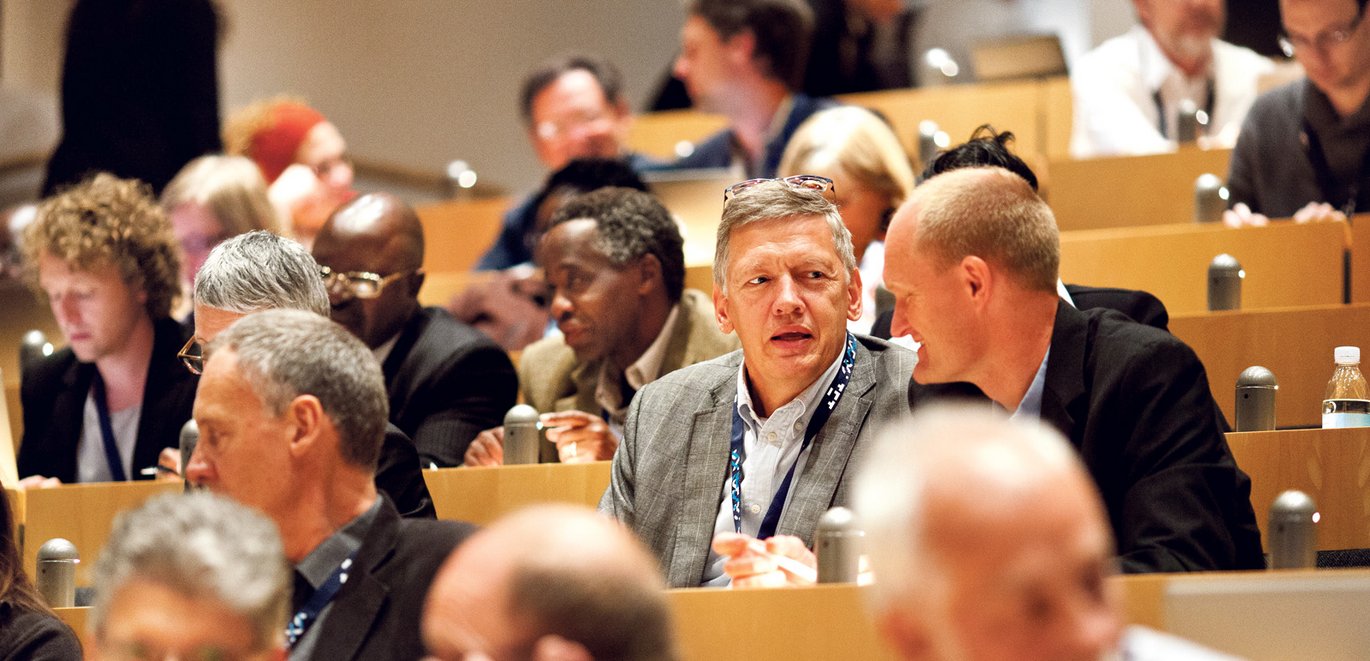Debate on Nordic-African cooperation
How can universities in Southern Africa and the Nordic countries give each other more help? This was the topic under discussion when 80 researchers and university staff met at the SANORD symposium 2012 in Aarhus. Associate professor Jens Seeberg, who has been one of the driving forces behind the symposium, tells us more about the potential of this partnership.

Even though you work at a university in Zambia, it might be hugely beneficial to collaborate with researchers in Sweden – and vice versa. This is the idea behind the SANORD partnership (with “SANORD” standing for Southern Africa and the NORDic countries).
“It’s important to underline that the SANORD network isn’t a development project – it’s an equal partnership between universities. Both sides can benefit from joining forces in their research, and the basic philosophy is that the sum of what you can achieve together is greater than what you can achieve apart,” explains Jens Seeberg, who is an associate professor of anthropology and ethnography and one of the main driving forces behind the SANORD symposium that has just been held in Aarhus.
Combining small grants into big ones
One of the important questions discussed at the symposium was how the 39 SANORD universities could organise their collaboration in the future. Jens Seeberg explains that the network currently allocates a large number of small grants of about DKK 35,000 per annum (the equivalent of about 50,000 South African Rands) to a variety of research projects involving Southern African and Nordic countries.
“And even though that might not sound like much, grants of that kind can mean a lot in Malawi or other Southern African countries. But of course these projects can’t exceed a certain size without better funding. So one of the things we’re talking about now is whether the funding should be combined to create a smaller number of larger grants, and whether SANORD grants should be made to help people apply for external financing for larger projects instead of being given in support of small projects,” says Jens Seeberg.
Horizon 2020
One of the things underlined at the symposium was the need to ensure that more researchers and students can meet across the north/south borders that divide them. A number of delegates also pointed out that SANORD was a great chance to offer solutions to some of the global challenges facing the world today – challenges for which the EU had granted huge amounts of funding. But this would require the universities in the SANORD partnership to gain a better overview of the research competences they possess.
And SANORD has one enormous asset, explains Jens Seeberg.
“Once a network like SANORD has been established, it becomes much easier to find partner universities for major EU applications, for instance. The SANORD network is a good framework in this connection, and the symposium agreed to keep a close eye on the progress of the EU’s Horizon 2020 programme so we can stay ahead of the game once we know how well the guidelines for Horizon 2020 applications match the joint competences of the SANORD universities,” he says.
From north-south to north-south-south
In addition to focusing on the EU framework programme and the current reform of the Erasmus Mundus programme, which now includes support for exchange visits by South African students, the symposium discussed various models for south-north collaboration.
“At the moment, the SANORD network functions primarily as the framework for bilateral collaboration between a university in the south and a university in the north. But SANORD could also play a key role in strengthening south-south collaboration, helping the African universities to cooperate with each other,” says Jens Seeberg.
He explains that the SANORD partnership originated in the historical links between the Nordic countries and Southern African during the struggle against apartheid, and underlines that people
are not encouraged to join the SANORD project based on their own interests alone.
“As the chairman of SANORD said to the symposium, you shouldn’t be a member if you’re only interested in what you can get out of it yourself. Because the benefits of being part of a university network aren’t always predictable, and new frameworks such as Horizon 2020 and Erasmus for All may contain opportunities that can suddenly turn existing networks such as SANORD into central players,” he concludes.
SANORD AT AU
The SANORD symposium established three strategic task forces to work on SANORD’s objectives, the opportunities of the new EU programmes, and the optimisation of SANORD as a framework for research collaboration. AU is represented in all three working parties. For more information about the Aarhus symposium, please see sanord.au.dk
